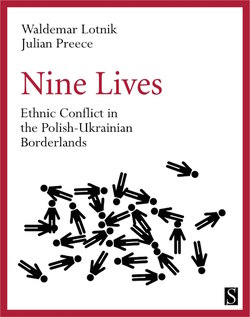Nine Lives

Реклама. ООО «ЛитРес», ИНН: 7719571260.
Оглавление
Waldemar Lotnik. Nine Lives
Contents
Preface to the e-book edition
Foreword
1 Caught in the Middle
2 Escalation
3 Capture and Flight
4 The Ukrainian Massacres
5 In the Puszcza Solska
6 Majdanek, April-July 1944
7 The Road to Freedom
8 Agent for the NKVD
9 The Free Cavalry, May-July 1945
10 Escape To the West, July 1945
11 The End of the Free Poles
Afterword
Chronology of Polish History, 1918-1945
Select Bibliography
Acknowledgements
Отрывок из книги
1 Caught in the Middle
2 Escalation
.....
It was either at this time or shortly afterwards that I witnessed an atrocity committed against a group of Jewish children, the only one I saw apart from the columns of marching men, or those in Majdanek where they happened all day and night. A four-wheeled cart passed me in the street, pulled by a single horse and carrying sixteen Jewish children, aged anything from eighteen months to fourteen or fifteen. There were no adults among them and the older ones held the babies in their arms. They were all standing up and looking out from between the uprights of the wooden cart; the life had gone out of their eyes and it was a dull stare that met my gaze. They were skinny but not emaciated, as pale as death but not dropping from exhaustion or cut from beatings. It was their last journey and from the vacant expression on their faces they must have known it. They had been discovered in a bricked-up section of a house, connected to the outside world by a tunnel through which their protectors, who seemed not to have been caught, passed them food and water. They had been there for many months, which meant the people who had looked after them must have been both dedicated to them and well organised – one person acting alone could not have supported them in this way. I watched the SS captain directing the procession, accompanied by his smartly-dressed, adoring Polish girlfriend, who gazed into his eyes with smiles of admiration. A few minutes after they had passed I heard pistol shots and then wandered down to the Jewish cemetery where they had been taken. Someone standing outside told me that three uniformed Germans had fired a couple of dozen shots and killed every single child.
Lwow, with its opera house and wide streets, had been a beautiful city before the war, always outshining Lublin in terms of splendour and sophistication. The magnificent railway station, with its glass and wrought-iron roof that I had admired on school trips, was worth a visit in its own right. Some of the wealthier town houses were faced with marble up to the first floor. At one time the city had been called Lemberg, when it had been the capital of Austrian Galicia and before that capital of the Polish Ukraine under the rule of the Polish-Lithuanian kings. It now looked very dirty and unkempt, everything was coated with layers of grime and muck. The city had lost its self-respect, every street brimming with displaced persons, although nothing very much seemed to have been destroyed when the Germans captured it. It was like a once elegant man about town who had fallen on bad times and gone to seed, but still retained some of his old manners and gestures among the throng of his impoverished new companions. Its once thriving Jewish community was no more; its survivors awaited their fate in the ghetto, although I had no time to explore.
.....